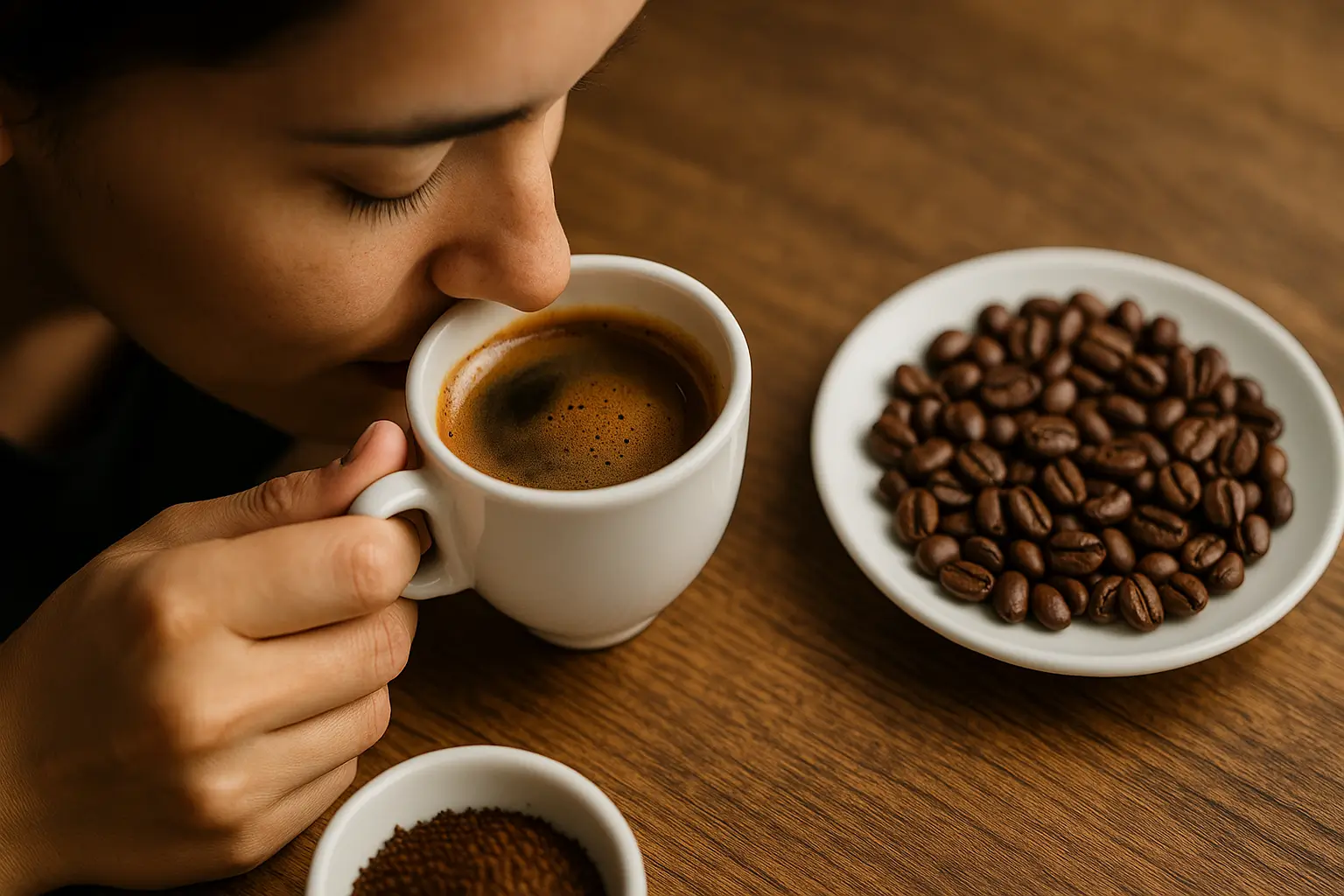Coffee is more than just a beverage—it’s a sensory experience. From its aroma to its aftertaste, every cup offers a spectrum of flavors waiting to be discovered. Developing your coffee palate means training your senses to recognize and appreciate these nuances. Whether you’re a casual drinker or aspiring connoisseur, this guide will help you build a deeper, more mindful relationship with your daily brew.
Why Developing Your Palate Matters
- Enhances enjoyment: You’ll begin to notice flavors and textures you once overlooked.
- Improves selection: Better tasting skills help you choose beans and brewing methods you genuinely enjoy.
- Boosts brewing skills: A trained palate makes it easier to troubleshoot and refine your technique.
- Prepares for cupping or judging: Essential for those pursuing careers in coffee.
Understanding the Five Key Senses in Coffee
1. Smell (Aroma)
A significant portion of what we “taste” actually comes from smell.
- Common aroma notes: floral, nutty, earthy, fruity, chocolatey
- Practice: Smell freshly ground beans and brewed coffee; compare with a scent wheel.
2. Taste
Coffee offers five basic taste sensations:
- Sweet: Caramel, brown sugar
- Sour/Acidic: Lemon, apple
- Bitter: Cocoa, dark roast
- Salty: Rare, but can appear in mineral-heavy brews
- Umami: Subtle, meaty depth in some dark roasts
3. Touch (Mouthfeel)
Mouthfeel refers to the tactile sensation:
- Light, silky, creamy, oily, gritty, or watery
- Influenced by brewing method, grind size, and coffee type
4. Sight
Visual cues help identify quality and preparation:
- Crema on espresso
- Clarity in pour-over
- Color depth in French press
5. Sound
While less involved in tasting, sound helps you identify brewing stages, especially with manual methods like AeroPress or moka pot.
How to Start Developing Your Palate
1. Taste Mindfully
- Sip slowly and with intention
- Close your eyes and focus on aroma and mouthfeel
- Note first impressions, then evolving flavors
2. Keep a Coffee Journal
- Record origin, roast level, brew method, and tasting notes
- Track how changes in variables affect flavor
3. Use a Coffee Flavor Wheel
- Helps expand your vocabulary
- Start with broad categories (fruity, nutty) and refine over time
4. Compare Coffees Side by Side
- Brew two or more coffees with different origins or processes
- Taste them back to back to highlight contrasts
5. Practice with Everyday Foods
- Taste fruits, nuts, and spices separately
- Compare with coffee notes to build reference memory
Factors That Influence Flavor Perception
- Origin: Soil, altitude, and climate affect flavor compounds.
- Processing method: Washed, natural, honey processes each impart distinct notes.
- Roast level: Light roasts preserve origin character; dark roasts emphasize roast flavor.
- Brewing method: Filter methods enhance clarity; immersion methods increase body.
Common Flavor Categories
| Flavor Family | Examples |
|---|---|
| Fruity | Berries, citrus, stone fruit |
| Nutty/Chocolate | Almond, hazelnut, cocoa |
| Spicy | Cinnamon, clove, pepper |
| Floral | Jasmine, rose, bergamot |
| Earthy | Tobacco, leather, wood |
| Sweet | Brown sugar, caramel, honey |
Advanced Techniques
1. Cupping
- Standardized method for tasting coffee
- Involves evaluating aroma, flavor, body, and aftertaste
2. Blind Tasting
- Tasting without knowing the coffee’s origin or process
- Sharpens unbiased perception
3. Calibration with Others
- Taste in groups to compare notes and expand perspective
Final Sip
Building your coffee palate is a journey, not a destination. It’s about curiosity, attention, and the willingness to slow down and savor. The more you practice, the more you’ll discover hidden dimensions in every cup.
So next time you brew, take a moment to explore. Let your senses guide you and turn every sip into a story of flavor and aroma waiting to unfold.
